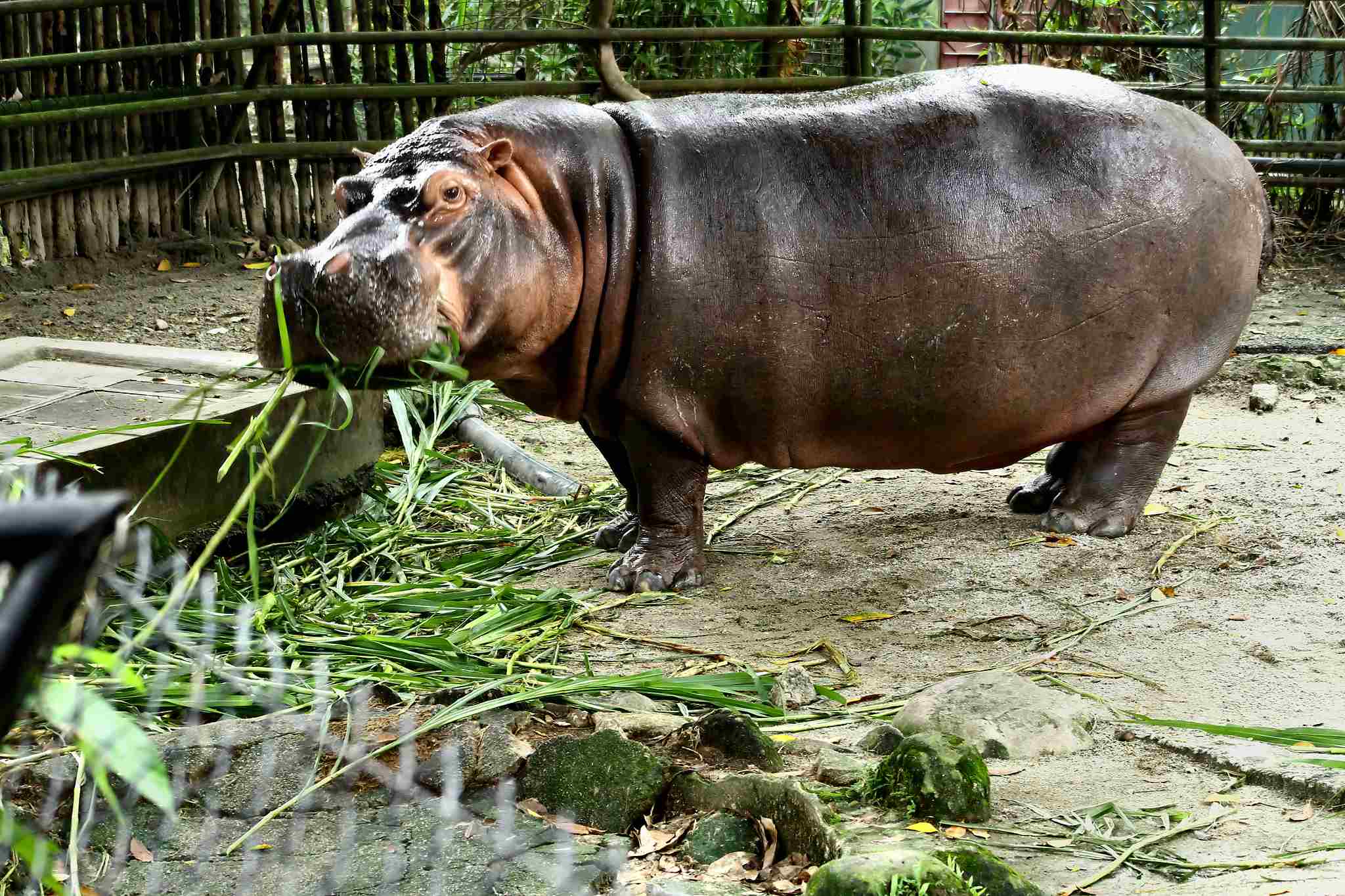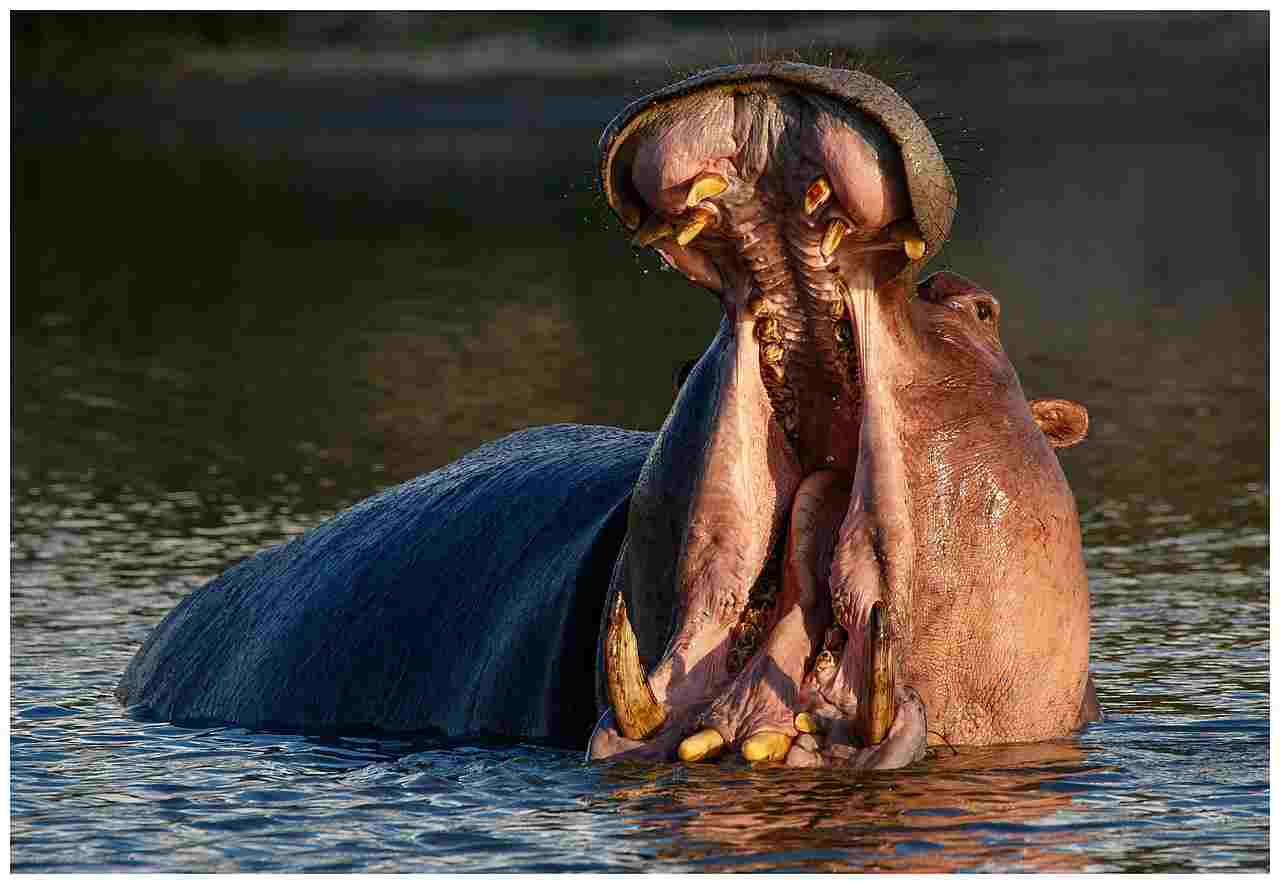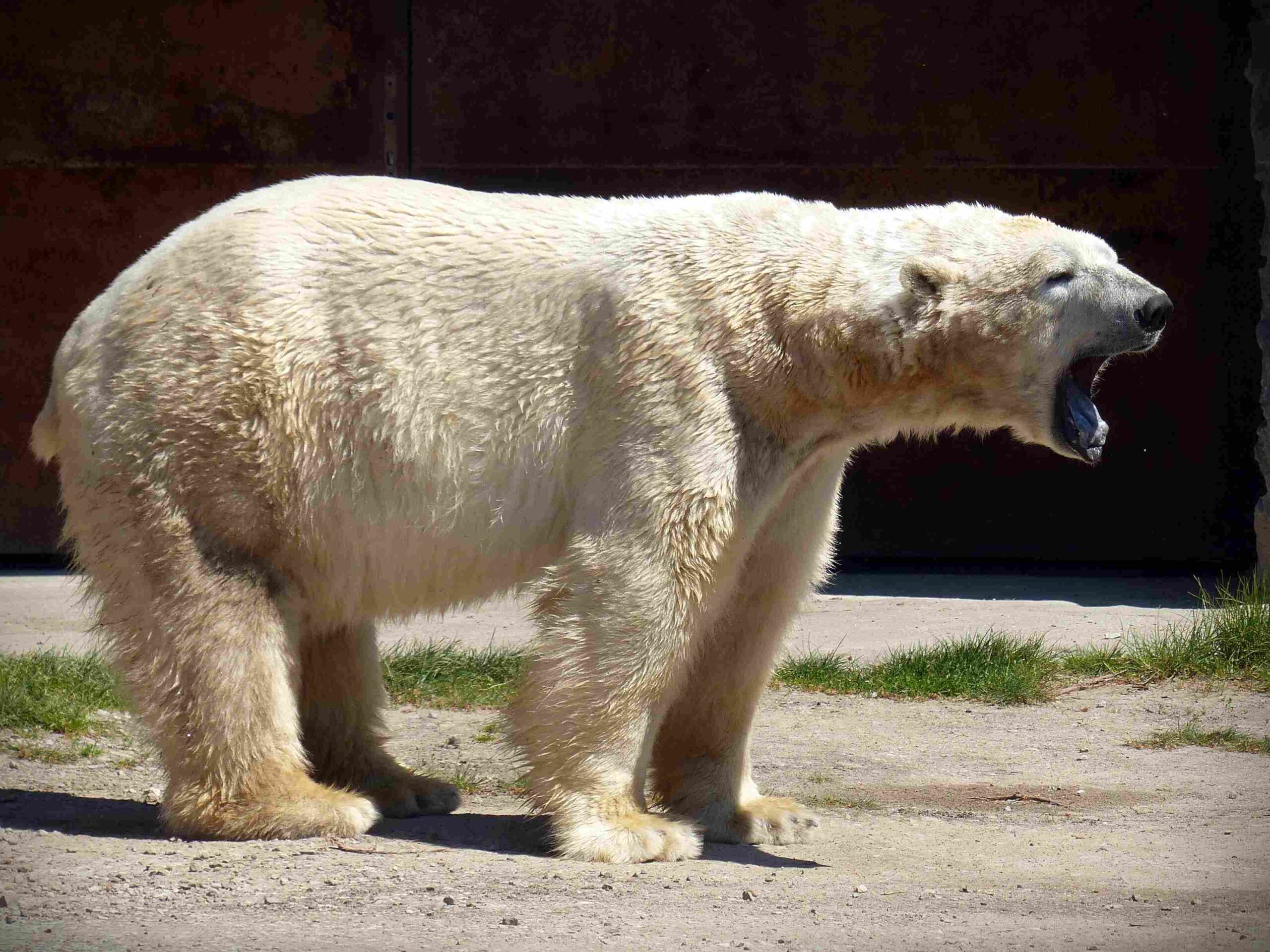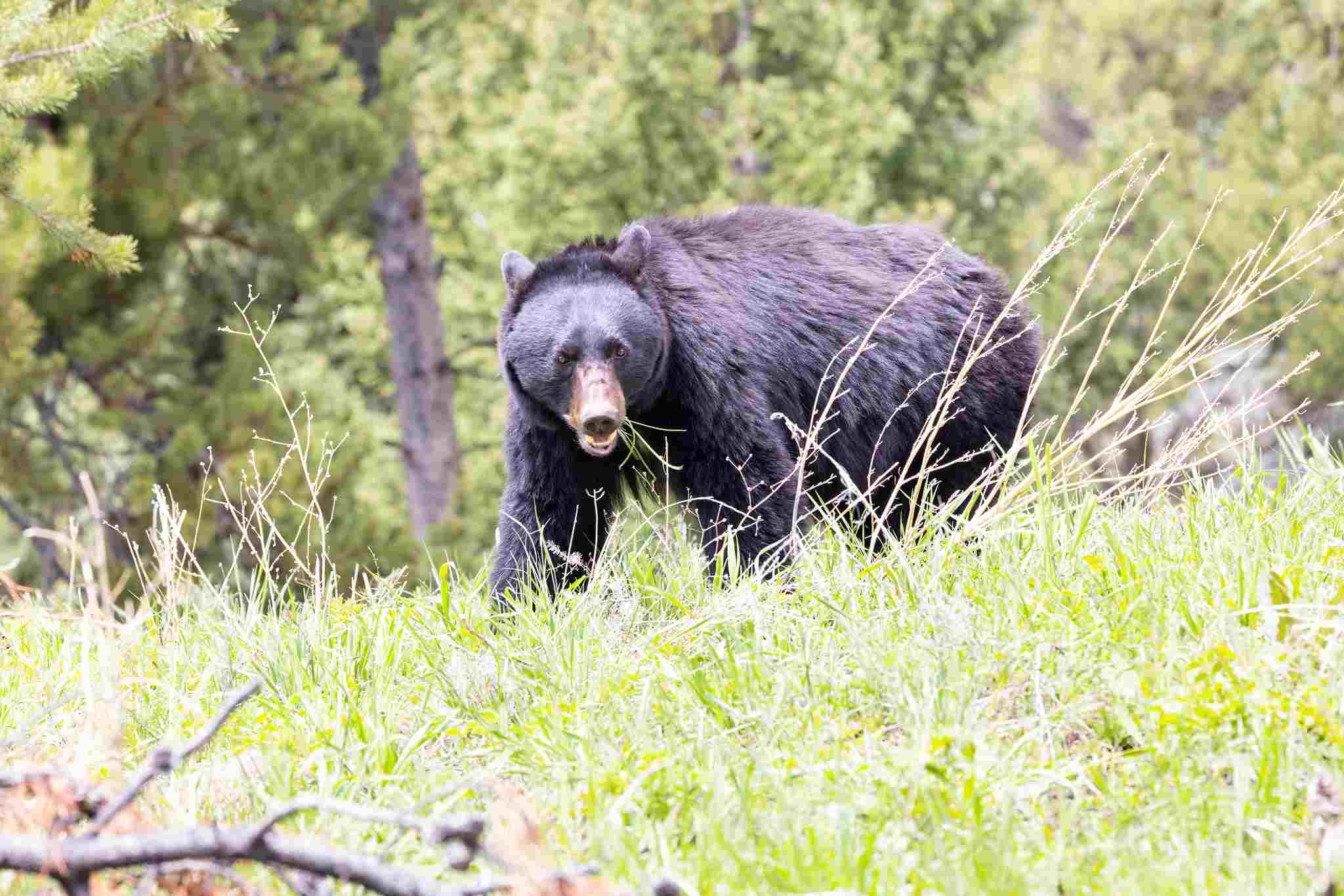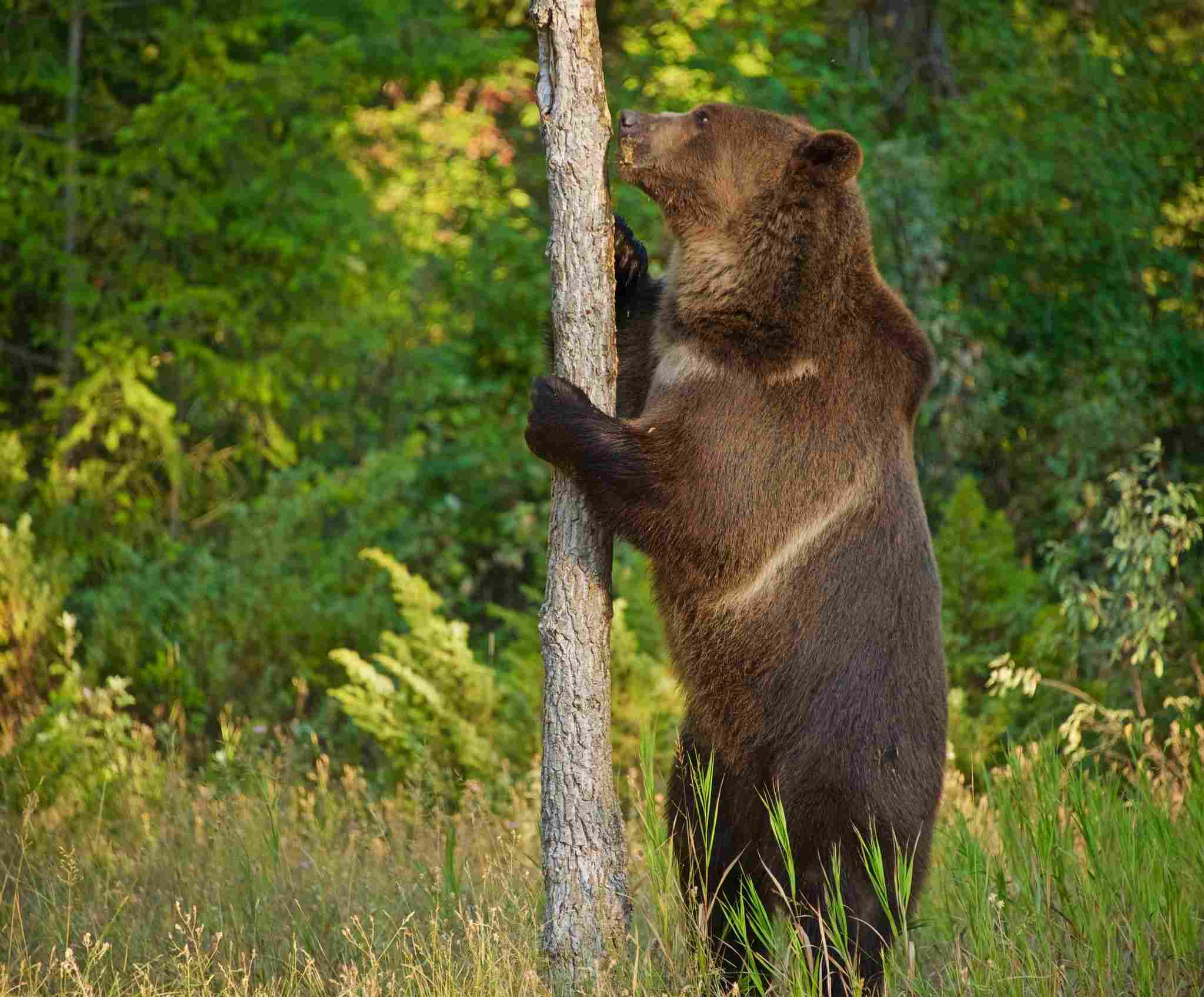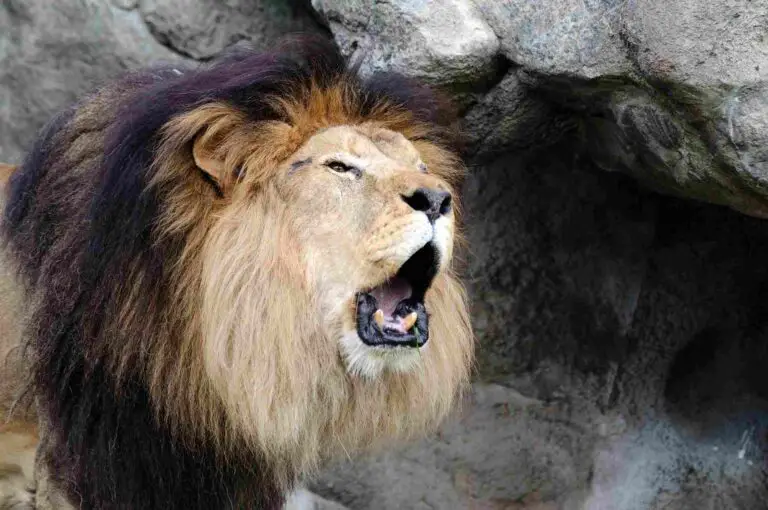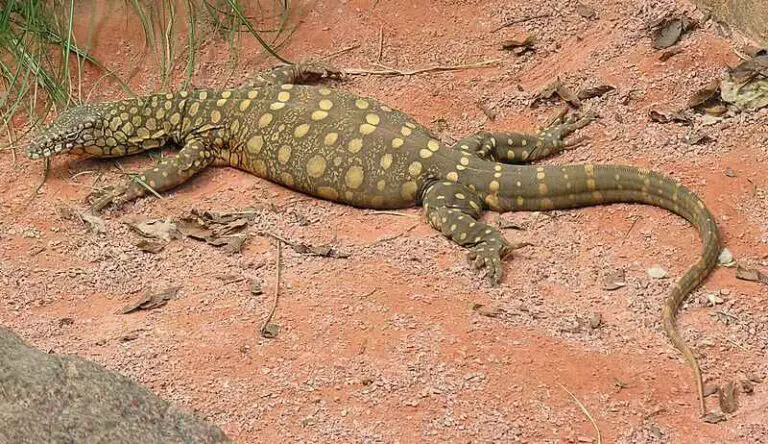Polar Bear Vs Hippo Comparison: 10+ Factors Considered
The polar bear and hippo are different in their physical characteristics, behavior, and ecological roles. In this article, we will explore and compare various aspects of these two fascinating animals.
From their size and weight to their locomotion and feeding habits, we will delve into the similarities and differences between polar bears and hippos. Additionally, we will examine their taxonomic classification, habitat, geographic range, and conservation status.
Key Outcomes of Comparison
When comparing the polar bear and the hippo, it becomes evident that the outcome of a confrontation between the two would heavily favor the hippo. This conclusion is based on several key factors, including taxonomic classifications, size and weight, agility, and attack/defense methods.
* In terms of taxonomic classifications, the polar bear belongs to the family Ursidae, while the hippo belongs to the family Hippopotamidae. Despite both being large mammals, their taxonomic differences indicate distinct evolutionary paths and adaptations.
* Size and weight also play a significant role in determining the likely outcome of a confrontation. The hippo surpasses the polar bear in both aspects, with adult males weighing up to 3,500 kilograms (7,700 pounds) compared to the polar bear’s average weight of 900 kilograms (2,000 pounds). This size advantage gives the hippo a considerable physical advantage in a confrontation.
* Furthermore, the hippo’s agility and attack/defense methods further solidify its dominance. Hippos are known for their speed and agility in water, where they can easily outmaneuver the polar bear. Additionally, hippos possess powerful jaws and sharp teeth, which they use to defend themselves and attack potential threats.
*Physical Comparison
1). Size
When comparing the size of polar bears and hippos, several factors come into play. One of the key measurements to consider is the average height and total body length of these two animals.
Polar bears are known for their impressive size, with adult males reaching heights of up to 10 feet and measuring around 8 to 9 feet in total body length. On the other hand, adult female polar bears are slightly smaller, typically measuring around 6 to 7 feet in height and 6 to 7.5 feet in total body length.
In contrast, hippos are known for their massive size, particularly in terms of their weight. While they may not be as tall as polar bears, adult male hippos can reach lengths of up to 16 feet and weigh between 3,500 to 9,900 pounds. Adult female hippos are slightly smaller, measuring around 12 to 14 feet in length and weighing between 2,900 to 4,000 pounds.
When comparing the size of polar bears and hippos, it is clear that hippos are larger in terms of weight and overall bulk. However, polar bears have a taller stature and longer body length.
2). Weight
When comparing the weight of polar bears and hippos, it is evident that hippos are significantly heavier than polar bears. The average weight of adult male polar bears ranges from 900 to 1,600 pounds, while adult female polar bears typically weigh between 500 and 700 pounds. In contrast, adult male hippos can weigh anywhere from 3,500 to 9,900 pounds, while adult female hippos weigh between 2,900 and 4,000 pounds.
The weight difference between these two animals is substantial, with hippos outweighing polar bears by several thousand pounds. This is primarily due to the fact that hippos have a more robust and bulky build, with a large amount of muscle and fat. In comparison, polar bears have a leaner physique, which allows them to be more agile in their Arctic habitat.
The weight discrepancy between polar bears and hippos is also reflected in their respective lifestyles and diets. Hippos are herbivores and consume large quantities of vegetation, which contributes to their weight gain. On the other hand, polar bears are carnivores and rely on a diet primarily consisting of seals and other marine mammals. Their diet, combined with their active hunting behavior, helps them maintain a leaner body mass.
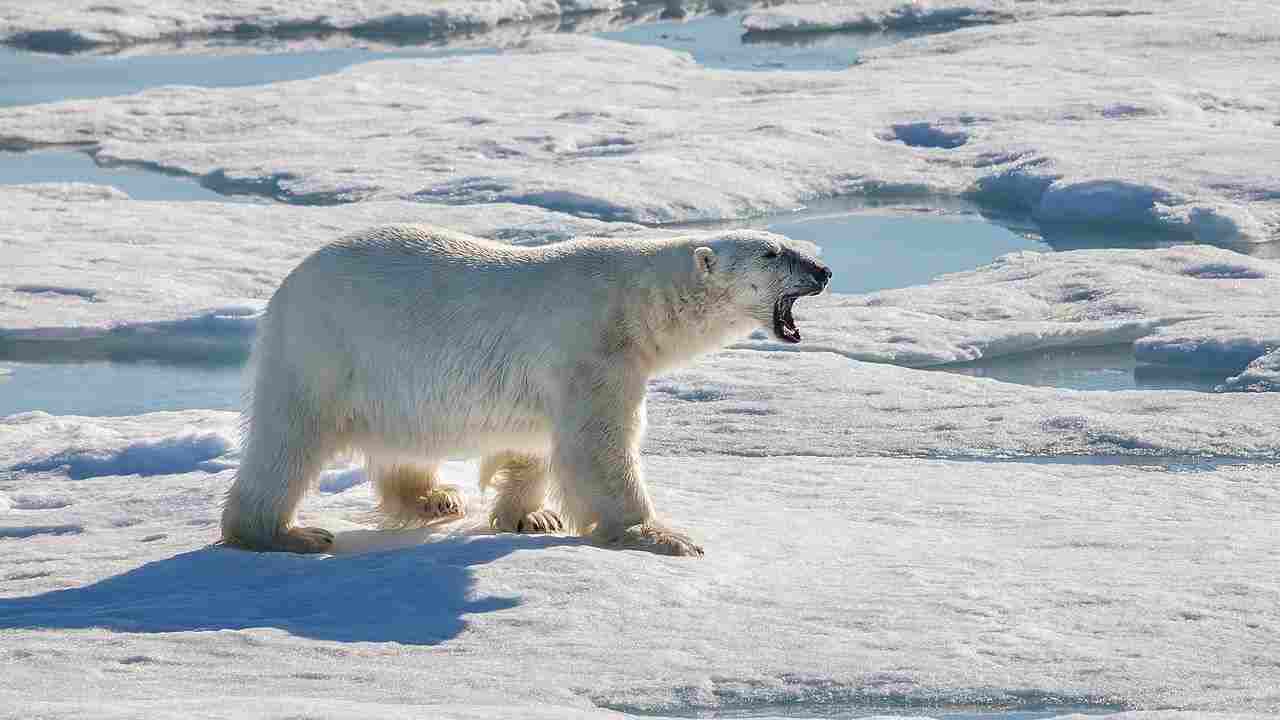
3). Skeletal Anatomy
Polar bears have a skeletal structure that is adapted for their Arctic habitat. Their bones are strong and dense, providing them with the necessary support and strength for their large size. The polar bear’s skull is elongated and robust, with powerful jaws and sharp teeth designed for capturing and consuming their prey. Their limbs are also well-developed, allowing them to swim efficiently in the water and walk on land with ease. The bones of polar bears are also adapted to withstand the extreme cold temperatures of their environment.
In contrast, hippos have a unique skeletal structure that is adapted for their semi-aquatic lifestyle. Their bones are relatively lighter compared to polar bears, allowing them to be buoyant in the water. The hippo’s skull is broad and massive, with large incisors and canines for biting and defending themselves. Their limbs are short and stout, enabling them to move easily both on land and in water. The bones of hippos are also adapted to support their massive weight and provide stability while walking or swimming.
The differences in skeletal anatomy between polar bears and hippos reflect their distinct evolutionary adaptations to their respective habitats and lifestyles. While polar bears have a robust skeletal structure for hunting and surviving in the Arctic, hippos have a lighter skeletal structure for their semi-aquatic existence.
4). Mode of Locomotion
The mode of locomotion is an important factor to consider when comparing polar bears and hippos. Both animals have distinct ways of moving that are adapted to their respective habitats and lifestyles.
Polar bears are excellent swimmers and are known for their ability to cover long distances in the water. They use their powerful front limbs to paddle through the icy Arctic waters, while their hind limbs are used for steering. On land, polar bears have a lumbering gait but can still move relatively quickly, especially considering their size. They can run at speeds of up to 25 miles per hour, allowing them to chase down prey or escape from danger.
In contrast, hippos are primarily aquatic animals but can also move on land. They are surprisingly agile in the water, using their webbed feet to propel themselves forward. Hippos can also walk or run on land, although their movements may appear clumsy due to their bulky bodies. Despite their size, hippos can reach speeds of up to 20 miles per hour when running, making them surprisingly fast for their weight.
The different modes of locomotion between polar bears and hippos reflect their adaptations to their respective environments. While polar bears rely on swimming and walking to navigate the Arctic, hippos are well-suited for moving through water and on land in their semi-aquatic habitats.
5). Speed
Polar bears are known for their impressive swimming abilities, allowing them to cover long distances in the water. With their powerful front limbs, they can paddle through the icy Arctic waters at remarkable speeds. On land, polar bears have a lumbering gait, but they can still move relatively quickly considering their size. They can reach speeds of up to 25 miles per hour, enabling them to chase down prey or escape from potential threats.
On the other hand, hippos are primarily aquatic animals but can also move on land. Despite their bulky bodies, hippos can surprisingly reach speeds of up to 20 miles per hour when running. This agility is particularly impressive given their weight and size. In the water, hippos are remarkably agile, using their webbed feet to propel themselves forward.
When comparing the speed of polar bears and hippos, it is clear that polar bears have the advantage. With their ability to swim and run at faster speeds, they are more adept at pursuing prey or escaping danger. However, it is important to note that hippos are still relatively fast for their weight and size, especially considering their semi-aquatic lifestyle.
6). Agility
Polar bears, with their ability to swim and run at faster speeds, showcase a higher level of agility compared to hippos. Their powerful front limbs allow them to paddle through the icy Arctic waters with remarkable speed, covering long distances effortlessly. On land, although polar bears have a lumbering gait, they can still move relatively quickly, reaching speeds of up to 25 miles per hour. This agility enables them to chase down prey or escape from potential threats efficiently.
On the other hand, hippos, despite their bulky bodies, exhibit surprising agility both on land and in the water. While primarily aquatic, hippos can also move on land and can reach speeds of up to 20 miles per hour when running. In the water, they utilize their webbed feet to propel themselves forward, showcasing their remarkable agility.
However, when comparing the agility of polar bears and hippos, polar bears have the advantage. Their ability to swim and run at faster speeds gives them a greater range of movement and maneuverability. This agility allows them to adapt to their environment more effectively, whether it be pursuing prey or evading danger.
7). Relative Strength and Endurance
When comparing the relative strength and endurance of polar bears and hippos, several factors come into play, including muscular endurance, size, weight, and agility.
In terms of muscular endurance, polar bears have the advantage. These majestic creatures are built for endurance, as they are known to swim long distances in search of food and mates. Their powerful muscles allow them to sustain their movements for extended periods, making them formidable predators in their Arctic habitat. On the other hand, while hippos are strong animals, their endurance is more limited, as they are primarily adapted for short bursts of energy rather than prolonged activity.
When it comes to sheer strength, hippos take the lead. These massive herbivores possess incredible muscular power, allowing them to defend themselves against predators and even overturn boats. Their size and weight contribute to their strength advantage, as adult hippos can weigh up to several tons. In contrast, while polar bears are strong animals, their strength is more focused on their hunting abilities rather than raw power.
In a direct confrontation between a polar bear and a hippo, the outcome would depend on various factors, including the environment and the specific circumstances. However, considering their relative strength and endurance, it is likely that the hippo’s power and size would give it an advantage in a physical confrontation.
While polar bears exhibit superior muscular endurance, hippos possess greater raw strength due to their size and weight.
8). Bite force
The bite force of hippos is over 500 psi higher than that of polar bears, on average.
Polar bears have a formidable bite force, which is essential for capturing and subduing their prey. With their strong jaws and sharp teeth, they can exert a significant amount of pressure when biting down. The average bite force of a polar bear is estimated to be around 1,200 pounds per square inch (psi). This immense bite force allows them to crush the bones and tough hides of their prey, making them highly efficient hunters.
On the other hand, hippos also possess a powerful bite force. Despite being herbivores, their bite force is surprisingly strong. The average bite force of a hippo is estimated to be around 1,800 psi, making it one of the strongest bites in the animal kingdom. This bite force is crucial for their feeding habits, as they need to tear through tough vegetation and defend themselves against potential threats.
In a confrontation between a polar bear and a hippo, the bite force of both animals would play a significant role. While the polar bear has a strong bite force, the hippo’s bite force is even more powerful. This could potentially give the hippo an advantage in a physical confrontation, as it could inflict severe damage on the polar bear with its powerful jaws.
9). Attack and Defense Method(s)
When it comes to attack and defense methods, both polar bears and hippos have unique strategies that they rely on for survival.
Polar bears primarily use their physical attributes, such as their strong jaws and sharp claws, for both attack and defense. Their powerful bite force allows them to overpower their prey and defend themselves against potential threats. Additionally, polar bears are excellent swimmers, which gives them an advantage when hunting and escaping danger.
On the other hand, hippos have their own set of attack and defense methods. Despite being herbivores, hippos are known for their aggressive nature and territorial behavior. They use their large size and weight to intimidate and fend off predators or other hippos. Hippos also have sharp incisors and canines that they use to bite and injure their opponents if necessary.
In a confrontation between a polar bear and a hippo, their attack and defense methods would come into play. The polar bear would rely on its strong bite force and physical strength to subdue the hippo, while the hippo would use its size, weight, and sharp teeth to defend itself.
*Likely Outcome of Confrontation
When considering the likely outcome of a confrontation between a polar bear and a hippo, it is important to analyze their physical attributes and abilities. While the polar bear may be faster and more agile, the hippo possesses several advantages that make it a formidable opponent.
Firstly, the hippo’s larger size and weight give it a significant advantage in terms of sheer strength. With its heavier and stronger body, the hippo has the ability to overpower the polar bear in a physical confrontation. Additionally, the hippo’s thicker skin provides a protective barrier against the polar bear’s attacks, making it more difficult for the bear to inflict serious damage.
Furthermore, the hippo’s broader jaws and long teeth give it a lethal bite force that can crush bones and damage organs. In contrast, while the polar bear has a strong bite, it may not be enough to overcome the hippo’s defenses. Ultimately, the polar bear would likely be unable to kill the hippo and would be at a disadvantage in a prolonged fight.
It is likely that the hippo would emerge as the victor in a confrontation with a polar bear. The hippo’s heavier weight, stronger body, thicker skin, and lethal bite force give it the upper hand in terms of attack and defense. While the polar bear may be faster, it would be ultimately overpowered by the hippo’s superior strength and defenses.
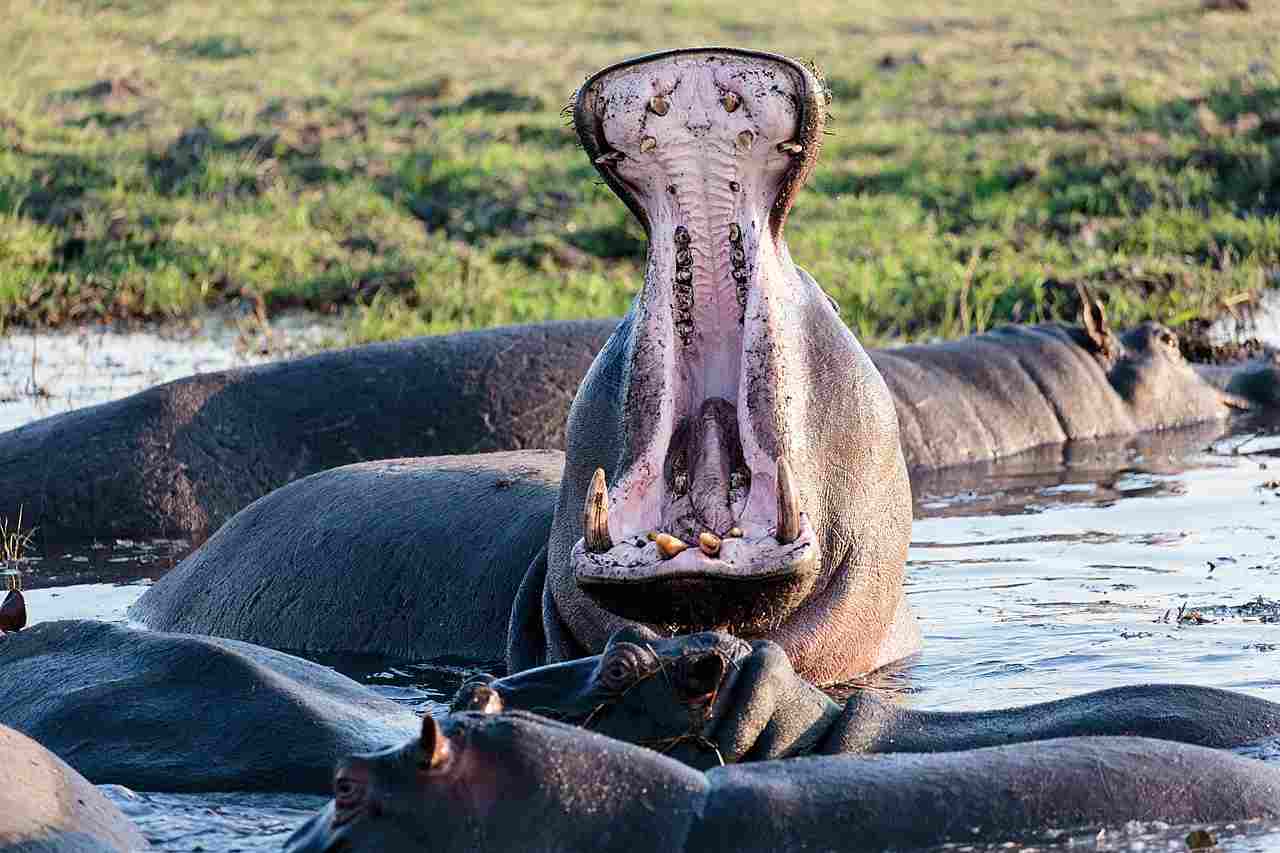
*Behavioral Comparison
10). Feeding/Predation Habits
Firstly, both polar bears and hippos have distinct dietary preferences. Polar bears are carnivores, primarily feeding on seals and other marine mammals. Their diet consists mainly of blubber, which provides them with the necessary energy to survive in their Arctic habitat. On the other hand, hippos are herbivores, consuming large quantities of grass and other vegetation.
In terms of mode of predation, polar bears are skilled hunters, relying on their excellent swimming and stalking abilities to catch their prey. They often wait patiently near breathing holes in the ice, ambushing seals as they surface for air. Hippos, on the other hand, are not predators. They are grazers, spending a significant amount of time in water bodies and feeding on aquatic plants.
When it comes to the tools used in predation and feeding, polar bears have sharp claws and powerful jaws, allowing them to catch and tear apart their prey. They also have a keen sense of smell, which helps them locate seals from a distance. Hippos, although herbivores, possess large and strong jaws that can inflict serious damage if threatened. However, their primary use of these jaws is for grazing and defending their territory rather than predation.
11). Social Behavior
Polar bears and hippos exhibit contrasting social behaviors. While polar bears are generally solitary animals, hippos are highly social creatures.
Polar bears tend to lead solitary lives, with individuals typically roaming and hunting alone. They have large home ranges and are known to be territorial, especially during the mating season. However, there are exceptions to this behavior, as polar bears may gather in large numbers when food sources are abundant, such as during the annual seal pupping season. This temporary social grouping allows for increased hunting success and mating opportunities.
In contrast, hippos are highly social animals that live in groups called pods or bloats. These groups can consist of up to 30 individuals, including both males and females. Within a pod, there is a hierarchical structure, with dominant males asserting their authority over subordinate males and females. Social interactions within the pod include vocalizations, physical displays, and even mock fights to establish dominance and maintain social order.
The social behavior of polar bears and hippos also extends to their parental relations. Female polar bears are solitary during most of the year but become more social when raising their cubs. The mother bear provides care and protection to her young until they are old enough to survive on their own. Hippos, on the other hand, exhibit strong maternal bonds, with females forming close relationships with their offspring. Young hippos often stay close to their mothers for several years, learning essential survival skills and social behaviors within the pod.
12). Aggressive Tendency
When comparing the aggressive tendencies of polar bears and hippos, it is important to consider the conditions that can cause aggression in these animals. Both species have the potential to exhibit aggressive behavior, but the triggers and intensity may vary.
For polar bears, aggression is often associated with competition for resources, such as food and mates. During the mating season, male polar bears can become more aggressive towards each other as they vie for the attention of females. Additionally, when food sources are scarce, polar bears may become more aggressive in their search for sustenance.
On the other hand, hippos are known for their territorial nature and can display aggression when defending their territory or young. Male hippos, in particular, can be highly aggressive towards intruders, including other males and potential threats to their pod.
When comparing the aggressive tendencies of polar bears and hippos, it is important to note that while hippos may have a reputation for being more aggressive due to their size and strength, polar bears should not be underestimated. Despite being smaller in size, polar bears possess powerful jaws and can be formidable when provoked.
13). Danger to Humans
Hippos, despite their herbivorous diet, are responsible for more human deaths in Africa than any other large animal. Their territorial nature and aggressive behavior make them a significant threat, especially when they feel threatened or when their young are in danger. Hippos have been known to charge at boats, overturn them, and attack humans who come too close.
On the other hand, polar bears, although smaller in size compared to hippos, should not be underestimated. They possess powerful jaws and are excellent swimmers, making them formidable predators. While polar bear attacks on humans are relatively rare, they can occur in situations where humans encroach upon their territory or when there is a scarcity of their natural prey, such as seals. In these instances, polar bears may view humans as a potential food source and act aggressively.
Therefore, both polar bears and hippos have the potential to pose a danger to humans. Hippos, with their territorial nature and aggressive tendencies, are responsible for more human deaths.
*Ecological Comparison
14). Taxonomic Classification
The taxonomic classification of an animal provides valuable insights into its evolutionary history and relationship with other species. In the case of the polar bear and the hippo, their taxonomic classifications reveal interesting differences and similarities.
The polar bear, scientifically known as Ursus maritimus, belongs to the genus Ursus and the species maritimus. This classification implies that the polar bear is closely related to other bear species, such as the brown bear and the black bear. Despite their shared ancestry, the polar bear has evolved unique adaptations to survive in its Arctic habitat.
On the other hand, the hippo, scientifically known as Hippopotamus amphibius, belongs to the genus Hippopotamus and the species amphibius. This classification indicates that the hippo is the only extant species within its genus. However, it shares a common ancestor with other extinct hippo species.
When comparing the taxonomic classifications of the polar bear and the hippo, we can observe that they belong to different genera and species. This highlights their distinct evolutionary paths and adaptations to their respective environments. While the polar bear is closely related to other bear species, the hippo stands as a unique representative of its genus.
15). Skin/Coat Texture, Camouflage
The polar bear is known for its thick, insulating fur that helps it withstand the extreme cold temperatures of the Arctic. The fur is composed of two layers: a dense undercoat and longer guard hairs. The undercoat provides insulation, while the guard hairs repel water and help the bear stay dry. The fur appears white, which provides excellent camouflage against the snowy background, allowing the polar bear to blend in and remain undetected by its prey.
In contrast, the hippo has a relatively hairless skin, with sparse bristles scattered across its body. The skin is thick and tough, providing protection against the sun and potential predators. The color of the hippo’s skin varies from gray to brown, depending on factors such as age and sun exposure. This coloration helps the hippo blend in with its surroundings in the water, providing camouflage against potential threats.
While the polar bear relies on its white fur for camouflage in the Arctic, the hippo’s skin coloration and texture allow it to blend in with its aquatic environment. Both adaptations are essential for their survival and hunting strategies. The polar bear’s white fur helps it sneak up on seals, while the hippo’s skin coloration helps it remain inconspicuous in the water, allowing it to ambush prey or escape from predators.
16). Reproduction
When it comes to reproduction, the polar bear and the hippo have distinct strategies. The polar bear is viviparous, meaning it gives birth to live young. After a gestation period of about 8 months, the female polar bear will typically give birth to one to three cubs in a den made of snow. The cubs are born small and helpless, weighing only about one pound. The mother bear provides them with warmth and nourishment from her milk until they are ready to venture out into the world.
On the other hand, the hippo is also viviparous, but with a unique twist. The female hippo gives birth to a single calf after a gestation period of around 8 months. Unlike the polar bear, the hippo gives birth in the water. The calf is born underwater and instinctively rises to the surface to take its first breath. The mother hippo is protective of her calf and will keep it close by, nursing it until it is able to eat vegetation.
17). Lifespan
The lifespan of polar bears and hippos can vary depending on various factors such as their environment and captivity. In the wild, polar bears have an average lifespan of around 25 to 30 years. However, some polar bears have been known to live up to 40 years or more. On the other hand, hippos have a slightly shorter lifespan in the wild, typically ranging from 30 to 40 years.
In captivity, both polar bears and hippos have the potential to live longer than their wild counterparts. Polar bears in captivity have been known to live up to 45 years or more, while hippos can live up to 50 years or more. The controlled environment and access to proper nutrition and healthcare contribute to their extended lifespans.
When comparing the lifespan of polar bears and hippos, it is important to consider the differences in their natural habitats. Polar bears inhabit the Arctic regions, where they face challenges such as climate change and loss of sea ice. These factors can impact their overall lifespan. On the other hand, hippos reside in sub-Saharan Africa, where they face threats such as habitat loss and poaching.
18). Habitat
The habitat of polar bears and hippos greatly differs due to their distinct natural environments. Polar bears are primarily found in the Arctic regions, inhabiting areas such as the Arctic Ocean, surrounding seas, and coastal regions. They rely on sea ice for hunting seals, their main source of food. The sea ice provides a platform for polar bears to rest, breed, and travel. However, with the increasing effects of climate change, the loss of sea ice poses a significant threat to their habitat and survival.
On the other hand, hippos are native to sub-Saharan Africa, where they inhabit rivers, lakes, and swamps. They are semi-aquatic creatures, spending a significant amount of time in water to keep cool and protect their sensitive skin from the sun. Hippos are herbivores and graze on grasses and aquatic plants found in their habitat. They are well-adapted to their aquatic environment, with specialized physical features such as webbed feet and eyes and nostrils positioned on the top of their heads.
The contrasting habitats of polar bears and hippos reflect their unique adaptations and lifestyles. While polar bears have evolved to thrive in the icy Arctic, hippos have adapted to the warm and watery landscapes of Africa. These distinct habitats also shape their behaviors and ecological roles within their respective ecosystems.
19). Geographic Range
Polar bears are primarily found in the Arctic regions, including the Arctic Ocean, surrounding seas, and coastal areas. They are specifically adapted to survive in the extreme cold and icy conditions of the Arctic. On the other hand, hippos are native to sub-Saharan Africa, where they inhabit rivers, lakes, and swamps. They are well-suited to the warm and watery landscapes of Africa.
Due to their contrasting habitats, the chances of polar bears and hippos crossing paths in nature are extremely low. The Arctic and sub-Saharan Africa are geographically separated by thousands of miles, making it highly unlikely for these two species to encounter each other in the wild. The polar bear’s range is limited to the northernmost regions of the globe, while hippos are restricted to specific areas in Africa.
This geographic separation also contributes to the differences in their adaptations and behaviors. Polar bears have evolved to thrive in the icy Arctic, relying on sea ice for hunting and survival. In contrast, hippos have adapted to the warm and aquatic environments of Africa, spending a significant amount of time in water to keep cool and graze on vegetation.
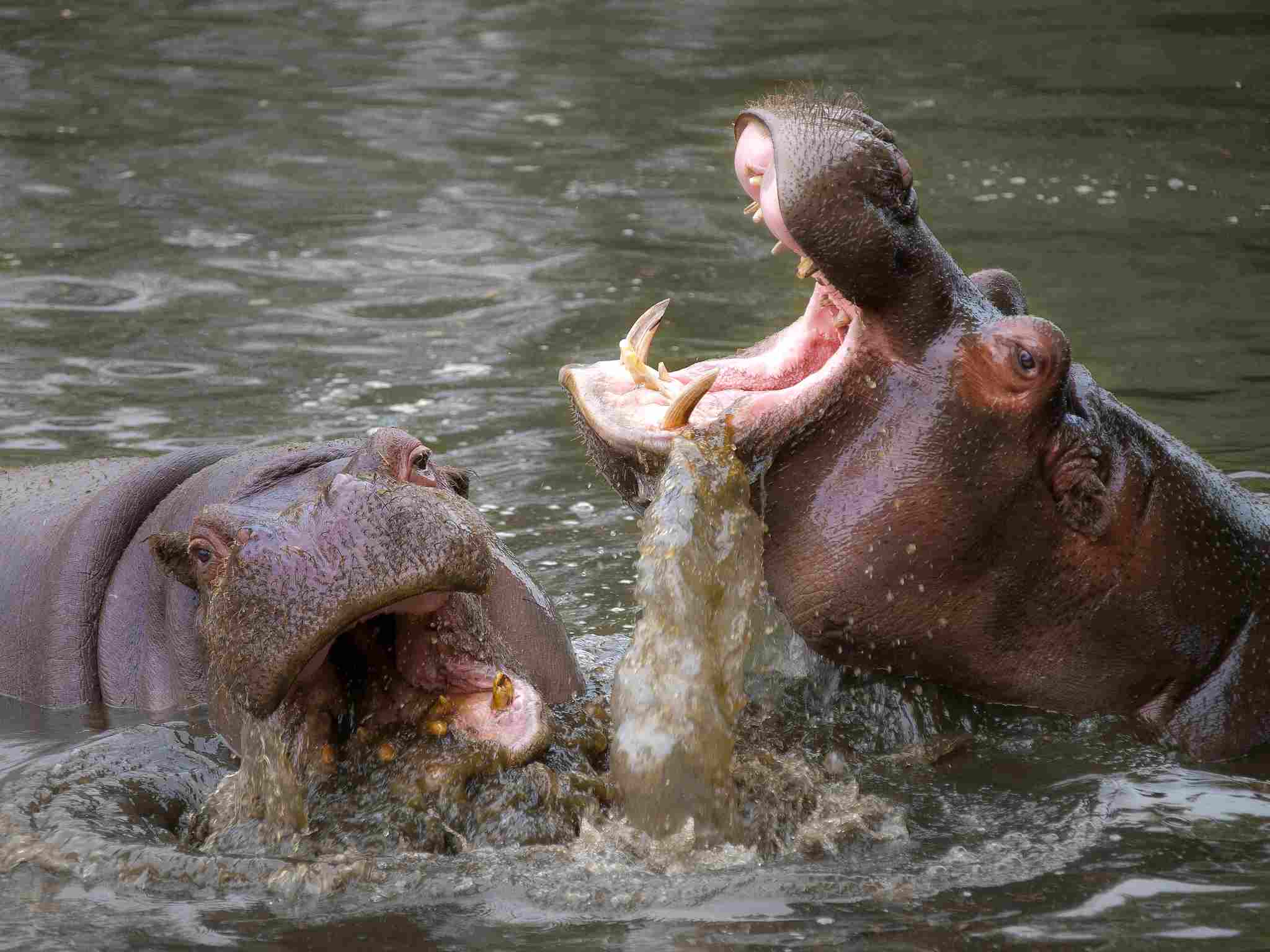
20). Ecologic Importance
The ecological importance of both polar bears and hippos cannot be understated. These two species play vital roles in their respective ecosystems, contributing to the overall balance and health of their habitats.
Polar bears, as apex predators in the Arctic, have a significant impact on the food chain. They primarily feed on seals, which helps regulate seal populations and prevent overgrazing of fish stocks. By controlling the seal population, polar bears indirectly influence the entire Arctic ecosystem, ensuring the stability of other species within the food web.
Hippos, on the other hand, are considered keystone species in African aquatic ecosystems. Their grazing habits help shape the structure and composition of vegetation in rivers, lakes, and swamps. By consuming large amounts of aquatic plants, hippos create open spaces and pathways for other species, promoting biodiversity and providing habitats for various aquatic organisms.
Furthermore, both polar bears and hippos contribute to nutrient cycling in their respective environments. Polar bears, through their hunting activities, distribute nutrients from marine ecosystems to the land when they consume seals on the ice. Hippos, through their grazing and defecation, provide nutrients to the aquatic ecosystems they inhabit, enriching the water and supporting the growth of algae and other organisms.
21). Conservation Status
The conservation status of both polar bears and hippos is a matter of concern due to the threats they face in their respective habitats.
Polar bears are classified as a “threatened” species by the International Union for Conservation of Nature (IUCN). The primary threat to their survival is the loss of sea ice habitat, which is essential for hunting and breeding. Climate change is causing the Arctic sea ice to melt at an alarming rate, reducing the availability of hunting grounds for polar bears. This loss of habitat directly impacts their ability to find food and reproduce, leading to a decline in their population.
Hippos, on the other hand, are currently classified as “vulnerable” by the IUCN. The main threats to their survival include habitat loss, poaching, and human-wildlife conflict. The conversion of wetlands into agricultural land and the construction of dams disrupt their natural habitats, limiting their access to water and suitable grazing areas.
Additionally, illegal hunting for their meat and ivory-like teeth poses a significant threat to hippo populations. Human encroachment into their habitats also increases the likelihood of conflicts between hippos and humans, resulting in negative outcomes for both parties.
Efforts are being made to conserve both species and mitigate the threats they face. Conservation organizations are working to raise awareness about the importance of protecting polar bears and their Arctic habitat. Measures are being taken to reduce greenhouse gas emissions and slow down the rate of climate change. Similarly, initiatives are in place to protect hippo habitats, enforce anti-poaching laws, and promote sustainable land use practices.
22). Main Threats to Survival
For polar bears, the primary threat is the loss of sea ice due to climate change. The melting of Arctic sea ice reduces the availability of hunting grounds, making it difficult for polar bears to find food and reproduce. This loss of habitat directly impacts their population, leading to a decline in numbers. Additionally, pollution and the accumulation of toxins in their environment further exacerbate the threats they face.
Hippos, on the other hand, confront threats such as habitat loss, poaching, and human-wildlife conflict. The conversion of wetlands into agricultural land and the construction of dams disrupt their natural habitats, limiting their access to water and suitable grazing areas.
Illegal hunting for their meat and ivory-like teeth also poses a significant threat to hippo populations. Furthermore, human encroachment into their habitats increases the likelihood of conflicts between hippos and humans, resulting in negative outcomes for both parties.
Efforts are being made to address these threats and conserve both species. Conservation organizations are working to raise awareness about the importance of protecting polar bears and their Arctic habitat. Measures are being taken to reduce greenhouse gas emissions and slow down the rate of climate change. Similarly, initiatives are in place to protect hippo habitats, enforce anti-poaching laws, and promote sustainable land use practices.
Conclusion
-Similarities
When comparing polar bears and hippos, there are several key similarities to consider. Firstly, both species are large and powerful animals. They possess immense size and weight, making them formidable in their respective habitats.
Additionally, both polar bears and hippos have a skeletal anatomy that is well-adapted to their environments. Their strong bones and muscular bodies enable them to navigate their surroundings with ease.
In terms of locomotion, both polar bears and hippos have unique modes of movement. Polar bears are excellent swimmers and rely on their strong front limbs to paddle through the water. Similarly, hippos are semi-aquatic and are capable of moving swiftly through water using their webbed feet.
Another similarity between these two species is their impressive speed and agility. Despite their large size, polar bears can reach speeds of up to 25 miles per hour on land. Hippos, on the other hand, can run at speeds of up to 20 miles per hour. This agility allows them to navigate their habitats efficiently and effectively.
Furthermore, both polar bears and hippos possess remarkable strength and endurance. They are well-adapted to their environments and have the ability to exert significant force when necessary. Additionally, both species have powerful bites, which they use for various purposes such as hunting or defense.
-Differences
Firstly, in terms of size, polar bears are generally larger than hippos. Adult male polar bears can weigh up to 1,500 pounds, while adult male hippos typically weigh around 3,500 pounds. This size difference gives polar bears a physical advantage in confrontations.
Another notable difference is their feeding habits. Polar bears are carnivorous and primarily feed on seals and other marine mammals. On the other hand, hippos are herbivores and mainly consume grasses and aquatic plants. This difference in diet reflects their distinct ecological roles and adaptations.
Additionally, their social behavior differs greatly. Polar bears are solitary animals, except during mating season or when raising cubs. In contrast, hippos are highly social and live in groups called pods. They engage in complex social interactions and communicate through vocalizations and body language.
Lastly, their habitats and geographic ranges vary significantly. Polar bears inhabit the Arctic regions, while hippos are found in sub-Saharan Africa. These distinct habitats shape their adaptations and survival strategies.
-Hypothesis
In terms of size and weight, the hippo has a clear advantage, weighing around 3,500 pounds compared to the polar bear’s maximum weight of 1,500 pounds. However, the polar bear possesses greater agility and speed, which could potentially offset the hippo’s size advantage.
Another factor to consider is the attack and defense methods of each animal. Polar bears have powerful bite forces and are skilled hunters, while hippos are known for their aggressive nature and ability to use their massive jaws to defend themselves.
Ultimately, the outcome of a confrontation between a polar bear and a hippo would depend on various factors such as the environment, the motivation of the animals, and their individual strengths and weaknesses.
